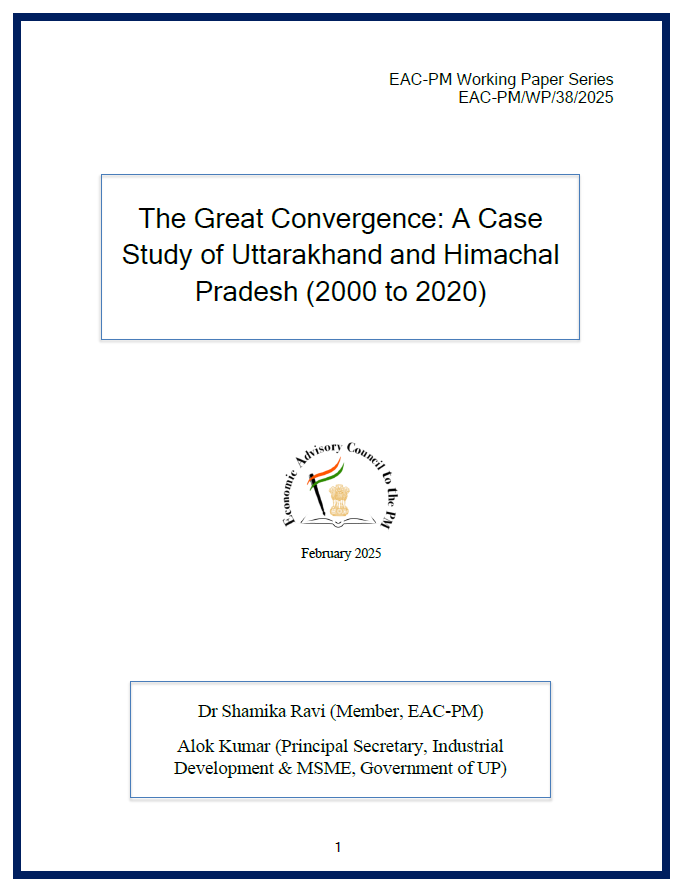We compare the growth and transformation of Uttarakhand (UK) economy to that of Himachal
Pradesh (HP) over a period of two decades [2000-2020]. In particular, we examine the changes
in the industrial sector output, particularly in view of the Concessional Industrial Package (CIP)
for the Hill States announced by the central government in January 2003. What emerged
subsequent to the central government’s announcement is akin to a ‘natural experiment’ given the
close similarities of the two neighboring states. We study the approaches of the two states in
response to the CIP which resulted in differing long-term trajectories of growth for the two
neighbors. The only fundamental difference between the industrial policies of the two states was
in their land policies, while all others were identical. We find that UK was able to rapidly catchup and subsequently exceed the per capita income of HP within a relatively short period of time.
The state was able to better leverage the benefits of the CIP owing to a proactive and dedicated
approach to town planning and land use policy which has emerged as one of the most critical
impediments to industrialization and urban growth across India. We further investigate the
impact of subsequent industrialization on tax revenues and spending patterns of the two states
over two decades.




